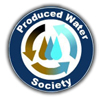Despite the fact that water covers 70 percent of the planet, a mere 3 percent of that water is fresh. Most of the planet’s freshwater is not readily available. The water systems that perpetuate ecosystems are stressed by a growing human population, disappearing wetlands, agricultural consumption and droughts related to climate change. At present, 14 of the world’s 20 largest cities are experiencing water shortages. According to the World Wildlife Organization, two-thirds of the world’s population will face water shortages by 2025.
In the face of these worsening conditions, seawater desalination operations will play an ever more important role in providing freshwater for drinking and agriculture. Obstacles to increasing freshwater production at desalination plants have included expensive energy demands, but solar power and localized small-scale facilities have begun to address these demands. More technological advancements will be needed to ramp up production.
Algae blooms in seawater present another major obstacle to current desalination technology. Phytoplankton-derived toxins and excessive plankton biomass adversely affect the quality of intake water for desalination facilities and the permeate produced by the reverse osmosis process. Algae bloom detection represents an ongoing necessity for freshwater production.
Turner Designs Hydrocarbon Instruments has partnered with Benchmark International to produce the new CF-200 Chlorophyll in Water Monitor. Chlorophyll-a is the photosynthetic pigments of green plants and planktonic algae. Its concentration is extensively used to estimate planktonic biomass and hence primary productivity. The CF‑200 alerts plant operators of algae blooms to help prevent excess pressure drop or contamination of the permeate.
Excessive phytoplankton can occur in coastal seawater and estuaries for several reasons, but algae blooms pose serious concerns to the operation of nearby desalination plants because of the high biomass of microalgae and a variety of substances that some of them produce, resulting in high suspended solid loads and organics. Sudden increase in chlorophyll-a concentration in raw seawater can cause significantly higher chemical consumption, increased membrane fouling rates, and in extreme cases, desalination plant outages.
The CF-200 Chlorophyll in Water Monitor offers early detection of chlorophyll-a increases so that operational adjustments can be made to ensure that production capacity remains unaffected. The CF-200’s fluorescence-based technology uses no chemicals, reagents or moving parts and is not susceptible to bubbles, silt or other debris in the water. The LED based probe has a life span of more than 5 years, without needing frequent factory calibrations or maintenance.
Visit the CF-200 Algae Monitor product page.




